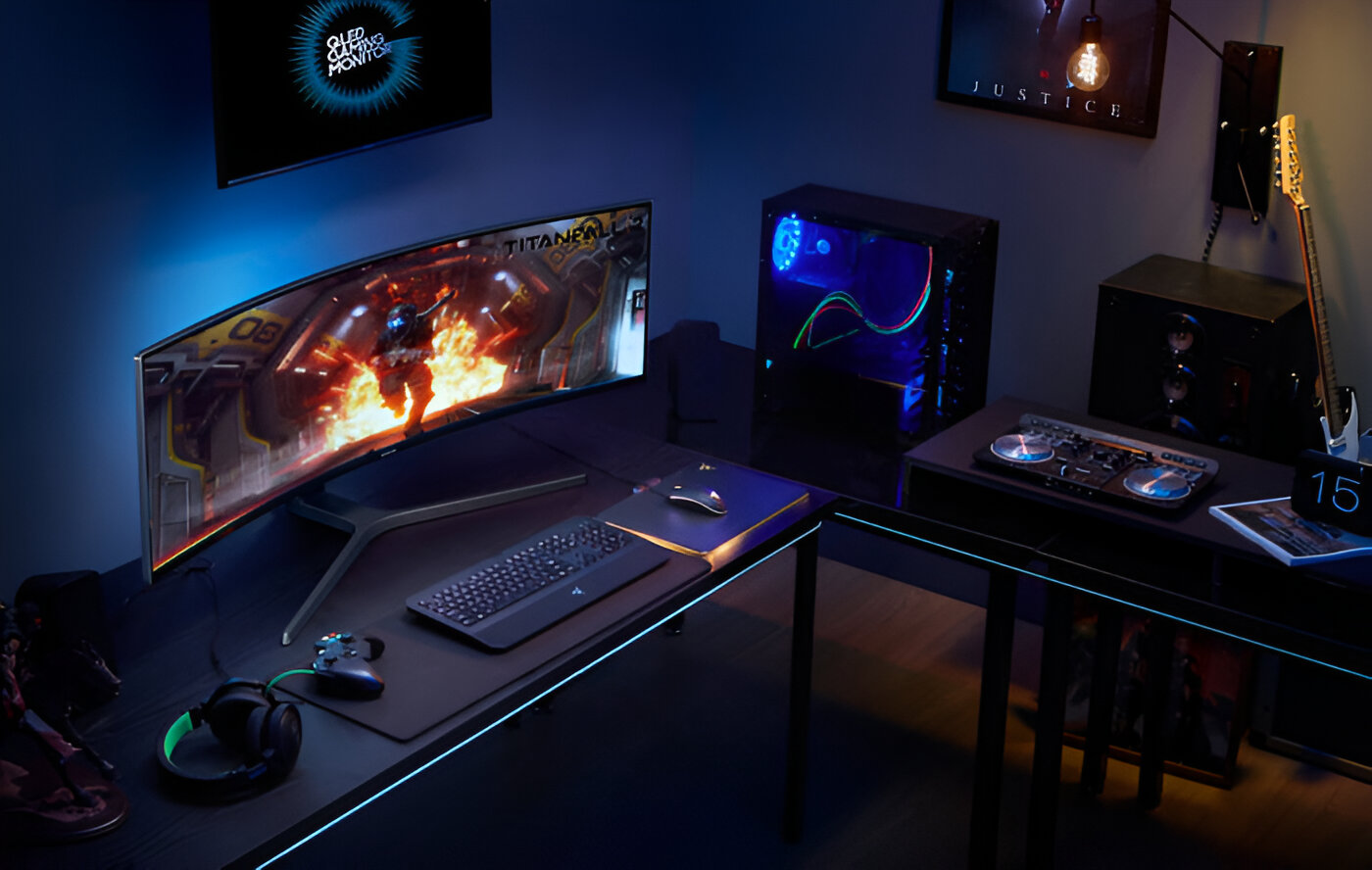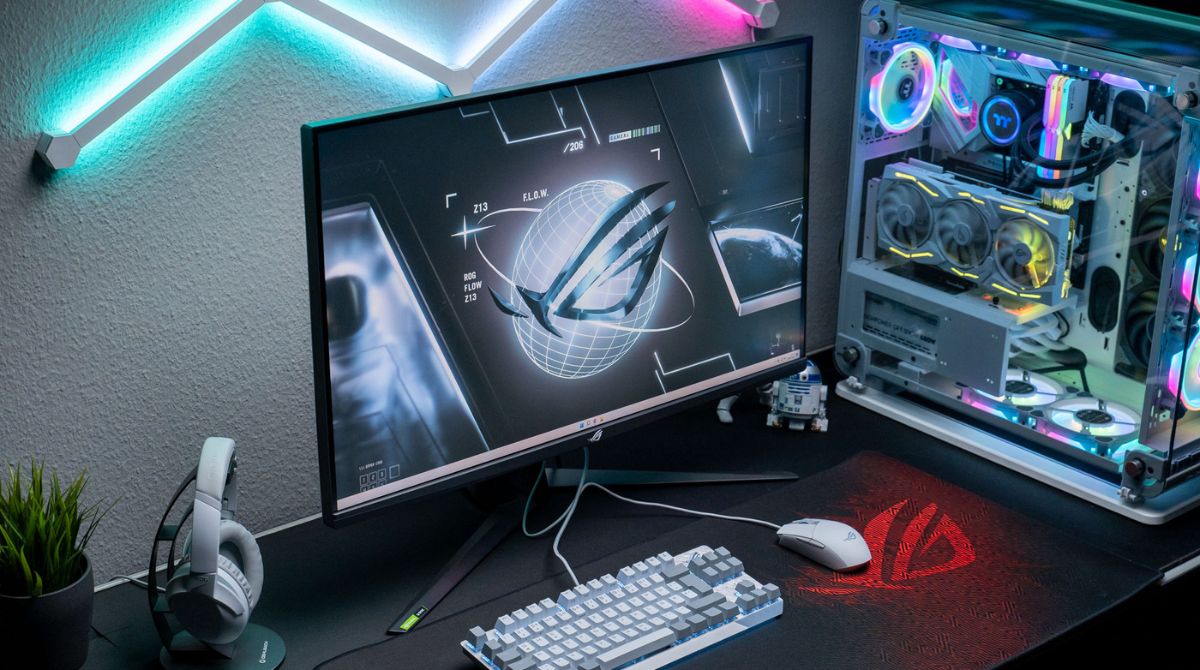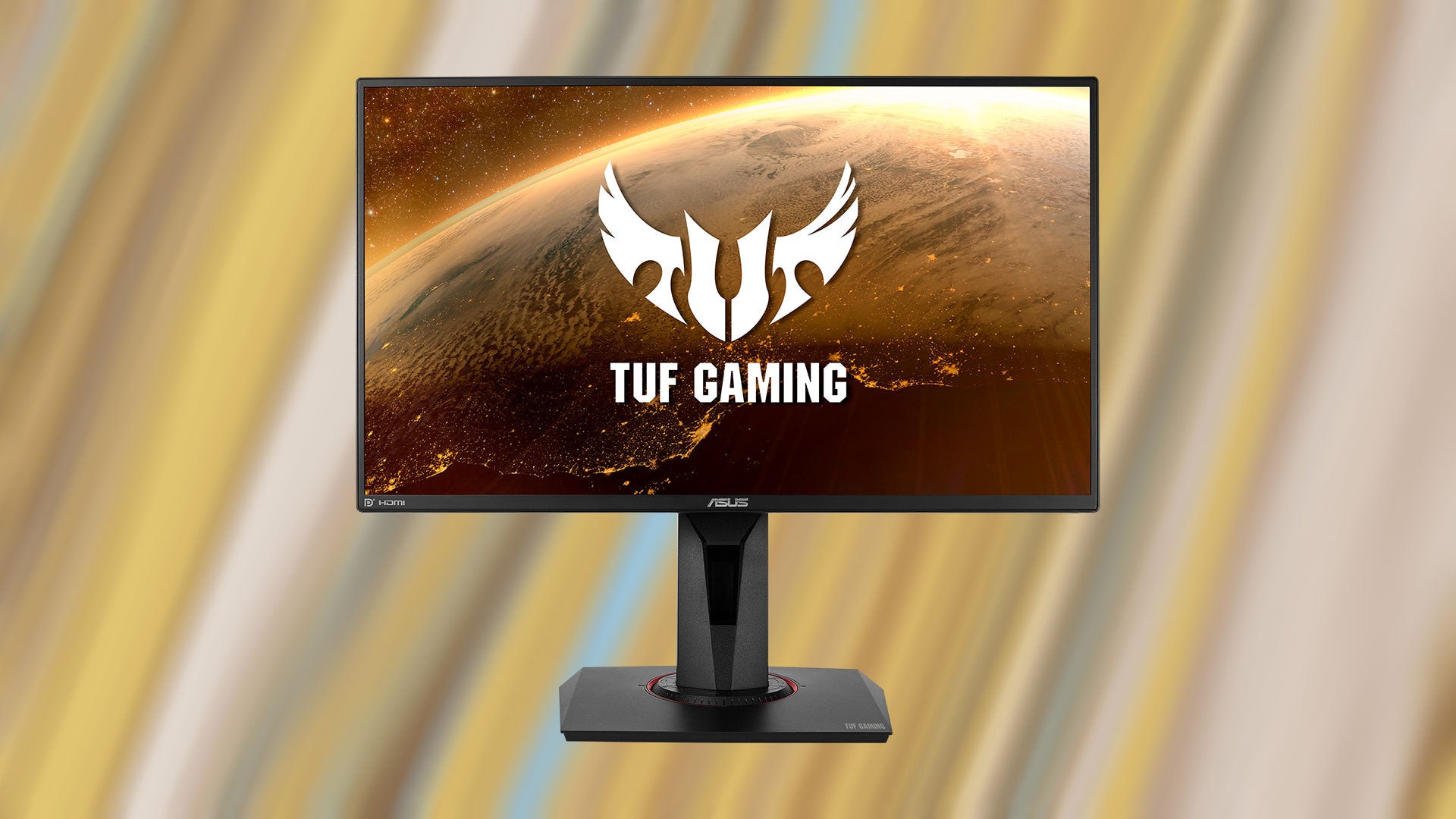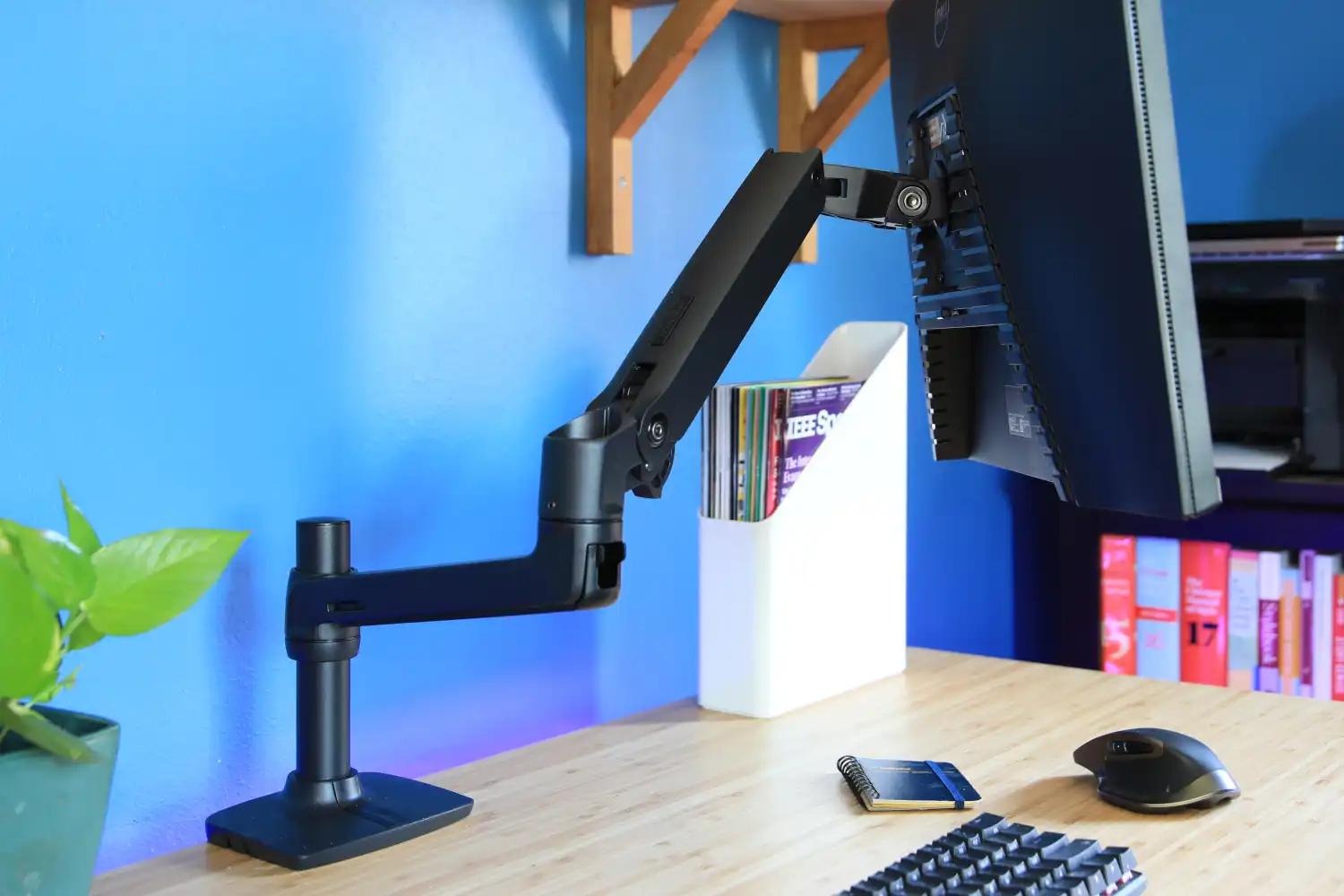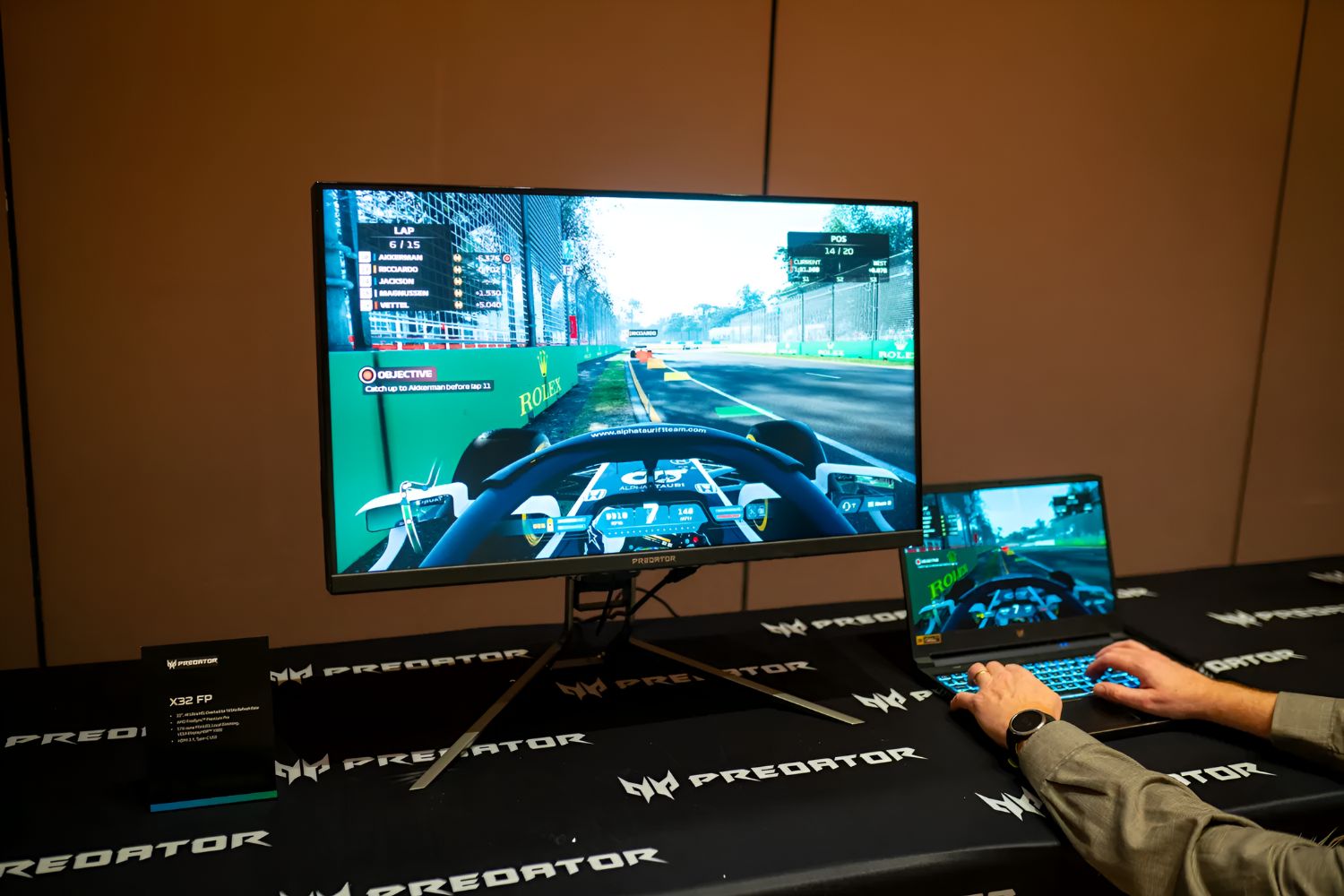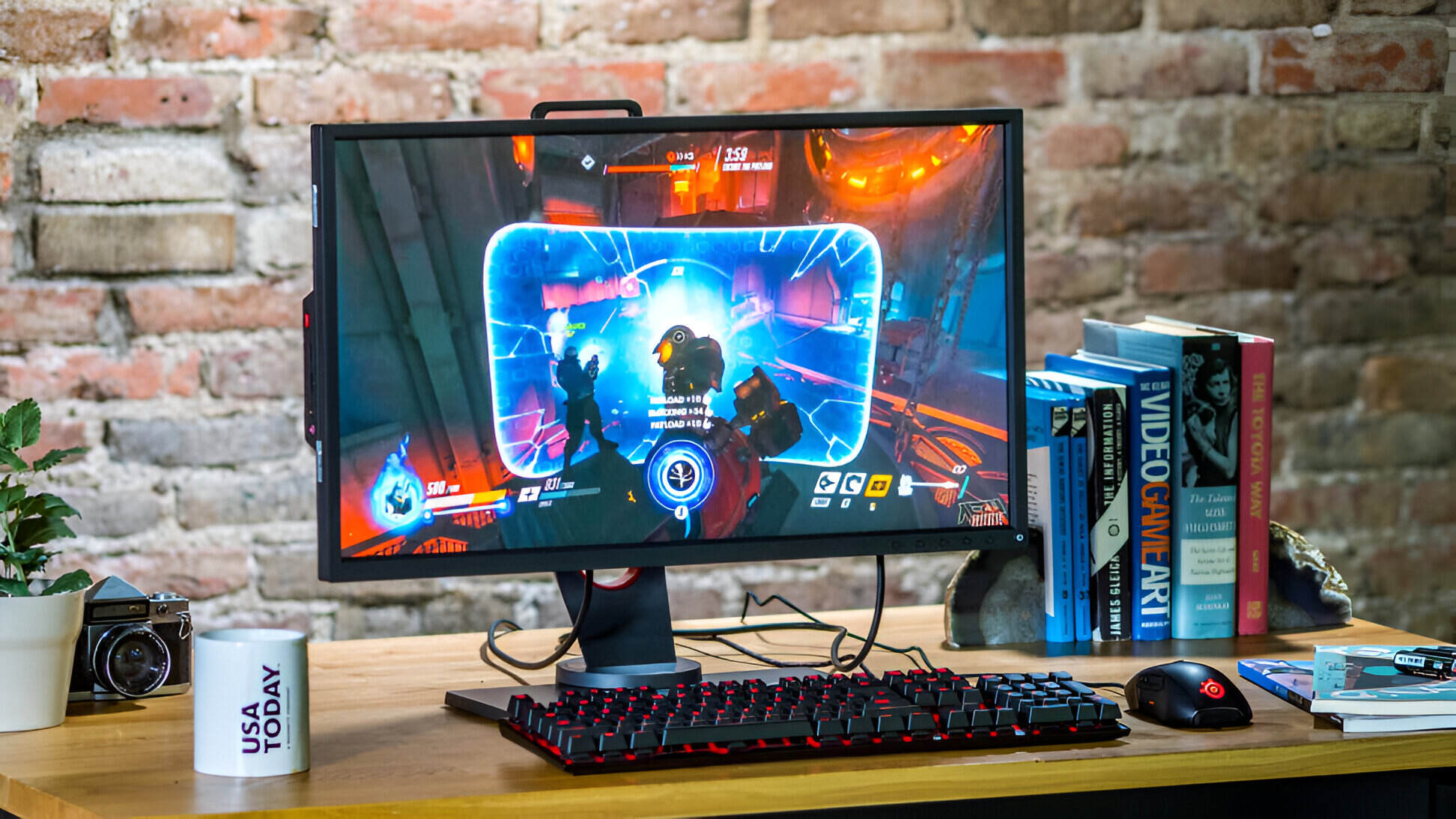Resolution and Display Size
When it comes to gaming monitors, the resolution and display size play a crucial role in delivering an immersive gaming experience. The resolution refers to the number of pixels on the screen, while the display size determines the physical dimensions of the monitor. Let’s take a closer look at these factors:
Firstly, resolution determines the level of detail and clarity in your games. The higher the resolution, the sharper and more realistic the visuals will appear. The two most common resolutions for gaming monitors are Full HD (1920×1080) and Quad HD (2560×1440). Full HD provides a great balance between performance and visual quality, while Quad HD offers even crisper details for a more visually engaging experience. For the ultimate in immersive gaming, 4K resolution (3840×2160) monitors are becoming increasingly popular, but keep in mind that they require a powerful graphics card to run games smoothly at this resolution.
Secondly, the display size can greatly impact your gaming experience. A larger display size allows you to fully immerse yourself in the game, as it provides a wider field of view. However, it’s important to find the right balance between display size and how far you sit from the monitor. For most gamers, a 24-27 inch monitor is ideal, as it offers a good balance between immersion and desk space. If you have a larger viewing area or prefer a more cinematic experience, you can opt for a 32-inch or larger monitor.
Ultimately, the resolution and display size you choose will depend on your personal preferences and gaming setup. Consider factors such as your budget, graphics card capabilities, and the space available on your desk. It’s crucial to find the right balance between resolution, display size, and your gaming preferences to ensure an optimal gaming experience.
Refresh Rate and Response Time
When it comes to gaming, having a high refresh rate and fast response time is essential for smooth and fluid gameplay. These two factors greatly impact the overall gaming experience, especially in fast-paced games where quick reactions are crucial. Let’s delve into the importance of refresh rate and response time:
The refresh rate refers to the number of times the monitor updates the image on the screen per second, typically measured in Hertz (Hz). A higher refresh rate, such as 144Hz or 240Hz, allows for a smoother display, reducing motion blur and giving you a competitive edge in fast-action games. With a higher refresh rate, you’ll be able to spot enemies more quickly and react faster, resulting in a more immersive and responsive gaming experience.
Equally important is the response time, measured in milliseconds (ms), which refers to how quickly a pixel can change from one color to another. A lower response time ensures that fast-moving objects in games appear sharper and with minimal ghosting or motion blur. Aim for a response time of 1ms or lower to ensure smooth and fluid visuals, especially during intense gaming moments.
It’s worth noting that both refresh rate and response time should be considered together, as they work hand in hand to deliver the best gaming experience. To fully optimize your gaming setup, it’s recommended to pair a high refresh rate monitor with a low response time to minimize any visual artifacts and ensure a seamless gaming experience.
While higher refresh rates and lower response times provide a superior gaming experience, they may come at a higher price. It’s important to balance your budget with your gaming needs to find the most suitable monitor for your gaming setup. Whether you’re a casual gamer or a professional esports player, investing in a gaming monitor with a high refresh rate and low response time will undoubtedly enhance your gaming performance and enjoyment.
Panel Technology
Panel technology is an important aspect to consider when choosing a gaming monitor, as it directly impacts the image quality, color accuracy, and viewing angles. There are various panel technologies available in the market, each with its own advantages and disadvantages. Let’s take a closer look at the different panel technologies:
1. TN (Twisted Nematic): TN panels are known for their fast response times, making them a popular choice for competitive gaming. They offer high refresh rates and low input lag, which are crucial for fast-paced gaming. However, TN panels typically have narrower viewing angles and mediocre color reproduction compared to other panel types.
2. IPS (In-Plane Switching): IPS panels provide excellent color accuracy and wider viewing angles, making them ideal for content creation and general use. They offer vibrant and rich colors, making games look visually stunning. However, IPS panels generally have slower response times compared to TN panels, which may result in motion blur in fast-paced games.
3. VA (Vertical Alignment): VA panels offer a good balance between TN and IPS panels. They provide better color reproduction and wider viewing angles than TN panels, while also offering faster response times than IPS panels. VA panels are known for their deep blacks and high contrast ratios, which can enhance the visual experience in games with dark scenes. However, VA panels may exhibit some motion blur and have slightly slower response times compared to TN panels.
4. OLED (Organic Light Emitting Diode): OLED panels are known for their exceptional color accuracy and contrast levels. They offer true blacks, vibrant colors, and wide viewing angles. OLED panels also have incredibly fast response times, virtually eliminating motion blur. However, OLED monitors are usually more expensive and may suffer from burn-in if static elements are present on the screen for extended periods.
When choosing a panel technology, it’s important to consider your specific gaming needs and preferences. If you prioritize fast response times and competitive gaming, TN panels may be the best choice. If you value vibrant colors and wider viewing angles, IPS panels are a great option. For a balance between the two, VA panels can provide a good compromise. OLED panels, although relatively rare in gaming monitors, offer an unparalleled visual experience for those with a higher budget.
Ultimately, the choice of panel technology depends on your personal preferences, budget, and the type of games you play. Consider the trade-offs between response times, viewing angles, color accuracy, and price to find the perfect panel technology that suits your gaming needs.
HDR (High Dynamic Range)
HDR, or High Dynamic Range, is a feature that has gained significant popularity in gaming monitors. It enhances the visual experience by expanding the range of colors and brightness levels, resulting in more vivid and realistic images. Let’s explore the benefits and considerations of HDR in gaming:
With HDR, gaming monitors can display a wider range of colors and shades, providing more depth and detail to the visuals. This means that bright areas appear brighter and dark areas appear darker, leading to a more immersive gaming experience. HDR allows for more realistic lighting effects, vibrant colors, and improved contrast, enhancing the overall visual quality of the games.
However, it’s important to note that not all HDR implementations are equal. HDR monitors come with different HDR standards, such as HDR10, HDR400, HDR600, and HDR1000, each offering varying levels of brightness, contrast, and color accuracy. Monitors that meet higher HDR standards tend to deliver a more impressive visual experience, but they often come with a higher price tag. It’s advisable to research and compare different HDR implementations before making a purchase to ensure that it meets your expectations.
In addition, for HDR to be truly effective, you need to have HDR-compatible content. Many modern games are now optimized for HDR and offer stunning visuals when played on an HDR monitor. However, it’s also worth noting that not all games or applications are HDR-enabled, so it’s essential to check the compatibility of the games you play before investing in an HDR monitor.
Another consideration with HDR is the monitor’s peak brightness. Higher peak brightness levels result in better HDR performance and more impactful visuals. HDR monitors with local dimming capabilities can further enhance the contrast and dynamic range by adjusting the backlight specific to different parts of the screen. This helps to eliminate blooming or halo effects and delivers more precise and accurate lighting in dark scenes.
Ultimately, HDR can elevate your gaming experience by providing more vibrant colors, improved contrast, and a greater sense of realism. However, it’s important to consider the HDR standard, peak brightness, compatibility with content, and your budget before purchasing an HDR gaming monitor. The right combination of these factors will ensure that you enjoy the full benefits of HDR technology and immerse yourself in visually stunning games.
Adaptive Sync Technology
Adaptive sync technology, also known as variable refresh rate (VRR), is a feature that synchronizes the refresh rate of the gaming monitor with the graphics card’s frame rate. This technology aims to eliminate screen tearing and stuttering, enhancing the overall gaming experience. Let’s explore the benefits and considerations of adaptive sync technology:
Traditionally, gaming monitors had a fixed refresh rate, typically 60Hz or 144Hz. However, the frame rates produced by the graphics card can vary depending on the complexity of the game and the system’s capabilities. This mismatch between the monitor’s refresh rate and the frame rate can result in screen tearing, where two different frames are displayed on the screen simultaneously. Adaptive sync technology addresses this issue by dynamically adjusting the refresh rate of the monitor to match the frame rate, resulting in smoother gameplay without screen tearing.
There are two main adaptive sync technologies in the market: AMD FreeSync and NVIDIA G-Sync. FreeSync is an open standard that is compatible with AMD graphics cards, while G-Sync is a proprietary technology developed by NVIDIA for use with their graphics cards. Both technologies aim to deliver similar benefits, but it’s essential to ensure that your graphics card and monitor are compatible with the specific adaptive sync technology you choose.
One consideration when it comes to adaptive sync technology is the range over which it operates. The range refers to the minimum and maximum refresh rates that the monitor can synchronize with. A wider range allows for a smooth gaming experience even at lower frame rates, while a narrower range may limit the effectiveness of the adaptive sync technology.
Another consideration is input lag. While adaptive sync technology can greatly enhance the visual experience, it may introduce a slight increase in input lag compared to a gaming monitor without adaptive sync. However, the increase in input lag is minimal and often unnoticeable for most gamers.
Adaptive sync technology is particularly beneficial for gamers who play fast-paced and visually intense games. It helps to provide a more fluid and immersive gaming experience by eliminating screen tearing and stuttering, resulting in smoother gameplay and improved responsiveness. However, it’s important to ensure that both your graphics card and monitor support the same adaptive sync technology to enjoy its benefits fully.
Overall, adaptive sync technology is a valuable feature to consider when purchasing a gaming monitor. It can greatly enhance the visual quality and smoothness of your gaming experience, ensuring that you fully immerse yourself in the gaming world without any distractions.
Connectivity Options
When choosing a gaming monitor, it’s important to consider the available connectivity options to ensure compatibility with your gaming setup and devices. The connectivity options determine how you can connect your gaming console or PC to the monitor. Let’s explore some common connectivity options and their benefits:
1. HDMI (High-Definition Multimedia Interface): HDMI is a widely-used connection option that supports both video and audio signals. Most gaming consoles, PCs, and laptops come equipped with HDMI ports, making it a convenient choice for connecting your devices to the monitor. HDMI supports high-definition resolutions and can handle high refresh rates, allowing for a smooth and immersive gaming experience.
2. DisplayPort: DisplayPort is another popular option in gaming monitors, offering high bandwidth and superior video quality. DisplayPort is capable of supporting higher resolutions and refresh rates compared to HDMI. It’s commonly used for connecting high-end graphics cards and gaming monitors, ensuring that you can fully take advantage of the capabilities of your gaming setup.
3. DVI (Digital Visual Interface): Although less common nowadays, many older monitors and graphics cards still support DVI. DVI offers a digital video connection and can handle high-resolution displays. However, it does not support audio, so you will need a separate audio connection if you want to incorporate sound into your gaming experience.
4. USB-C: USB-C is a versatile connectivity option that can transmit both video and data. It’s commonly found in newer laptops and some gaming monitors. USB-C delivers high-quality video output and can also provide power and data transfer capabilities. This makes it a convenient choice if you want to connect your laptop or other compatible devices to the gaming monitor with a single cable.
5. VGA (Video Graphics Array): VGA is an older analog connection that can still be found in some monitors. However, VGA does not support high-resolution displays or advanced features like high refresh rates. It’s best to opt for a digital connection option like HDMI or DisplayPort for a better gaming experience.
When choosing a gaming monitor, consider the devices you will be connecting to it and ensure that the monitor has the necessary connectivity options to support your gaming setup. Additionally, check the version of the connection options supported by both the gaming monitor and your graphics card to ensure compatibility and optimal performance.
Remember, the choice of connectivity options largely depends on your specific gaming setup and the devices you are using. Choose the connection option that best suits your requirements and provides the optimal experience for your gaming sessions.
Design and Ergonomics
While the technical specifications of a gaming monitor are crucial, the design and ergonomics also play an important role in providing a comfortable and enjoyable gaming experience. Let’s explore some key aspects to consider when it comes to the design and ergonomics of a gaming monitor:
1. Bezel and Screen-to-Body Ratio: The bezel refers to the frame around the screen. A minimal bezel design or a narrow border allows for a more immersive gaming experience, as it minimizes distractions and provides a larger viewing area. Additionally, the screen-to-body ratio indicates how much of the monitor’s front is occupied by the display, enhancing the overall aesthetic appeal.
2. Adjustability: An ergonomic gaming monitor allows for easy adjustment of height, tilt, and swivel. This allows you to find the most comfortable viewing position, reducing strain on your neck and improving your overall posture. Look for a monitor with a flexible stand or VESA mount compatibility if you prefer to mount the monitor on an adjustable arm.
3. Cable Management: Consider a gaming monitor with built-in cable management features. These features help keep your gaming setup neat and organized by keeping cables out of sight and reducing clutter on your desk. This not only enhances the aesthetic appeal but also makes it easier to access ports and connectors.
4. Anti-Glare and Matte Coating: Look for a gaming monitor with an anti-glare or matte coating. These features help reduce reflections and glare, enhancing visibility and reducing eye strain during long gaming sessions. This is especially essential if your gaming setup is in a well-lit room or near a window.
5. Built-in Speakers and Audio Connectivity: Some gaming monitors come with built-in speakers, which can be a convenient option if you don’t want to invest in separate speakers. However, if audio quality is important to you, consider external speakers or headphones for a better gaming audio experience. Additionally, ensure that the monitor has the necessary audio connectivity options, such as a headphone jack or audio output.
6. RGB Lighting: RGB lighting on gaming monitors has become increasingly popular, allowing you to customize and synchronize the lighting effects with other peripherals. This can add an extra element of style and personalization to your gaming setup, creating an immersive gaming ambiance.
Remember, the design and ergonomics of a gaming monitor are subjective and depend on your personal preferences and gaming setup. Consider factors such as adjustability, aesthetics, cable management, and additional features like built-in speakers and RGB lighting to choose a monitor that not only meets your technical requirements but also enhances the overall gaming experience.
Eye Care Features
As gamers, we often spend extended periods in front of our monitors, which can potentially strain our eyes. That’s why it’s important to consider eye care features when choosing a gaming monitor. These features are designed to reduce eye fatigue and provide a more comfortable viewing experience. Let’s explore some common eye care features:
1. Flicker-Free Technology: Flickering screens can cause eye strain and discomfort. Flicker-free technology eliminates the flickering of the backlight, resulting in a more stable and consistent image. This helps reduce eye fatigue during long gaming sessions, allowing you to play for extended periods without straining your eyes.
2. Low Blue Light Filter: Blue light emitted by screens has been linked to eye strain and disruption of sleep patterns. Gaming monitors with a low blue light filter reduce the amount of blue light emitted, especially during evening or nighttime gaming sessions. This helps minimize eye fatigue and promotes better sleep quality after intense gaming sessions.
3. Adjustable Brightness: The ability to adjust the brightness of the monitor is crucial for eye comfort. Gaming monitors with adjustable brightness allow you to find the optimal level of brightness for your gaming environment, reducing the strain on your eyes and adapting to different lighting conditions.
4. Anti-Glare Coating: An anti-glare coating on the monitor’s screen helps reduce reflections and glare, enhancing visibility and minimizing eye strain. This is particularly important in well-lit rooms or when playing games with dark scenes, as it ensures a clear and comfortable viewing experience.
5. Ergonomic Design: While not directly an eye care feature, an ergonomic design can contribute to eye comfort. Look for a gaming monitor with adjustable height, tilt, and swivel options. This allows you to position the monitor at the most comfortable angle, reducing strain on your neck and eyes.
6. Screen Calibration: Some gaming monitors offer screen calibration options to adjust color temperature, gamma, and other visual settings. Properly calibrating the screen can help ensure accurate and comfortable visuals, reducing eye strain caused by overly bright or inaccurate colors.
When selecting a gaming monitor, consider these eye care features to minimize eye fatigue and prioritize your visual comfort. Taking care of your eyes while gaming is essential for long-term eye health and can contribute to a more enjoyable gaming experience overall.
Price and Value for Money
Price is a crucial factor to consider when purchasing a gaming monitor, as it directly impacts your budget and the overall value you’ll get from your investment. While it’s important to find a monitor that fits your desired specifications, it’s equally important to assess the value for money it offers. Let’s explore the relationship between price and value when it comes to gaming monitors:
1. Budget Considerations: Determine your budget range before shopping for a gaming monitor. It’s essential to strike a balance between your desired specifications and your budget. Consider the features that are most important to you and prioritize accordingly. You may need to make some compromises, but with proper research, you can find a gaming monitor that offers excellent value within your budget.
2. Specifications and Performance: Assess the specifications of the gaming monitor and how they align with your gaming needs. Look at factors such as resolution, refresh rate, response time, panel technology, and connectivity options. Consider the types of games you play and the requirements they have. It’s important to find the right balance of performance and specifications that you need, ensuring that you’re getting the most value for your money.
3. Brands and Reputation: Consider the reputation and reliability of the brands manufacturing the gaming monitors you’re interested in. Well-known brands often have a history of producing high-quality monitors that offer good value for money. Look for reviews, customer feedback, and professional assessments to gauge the reputation and reliability of the brand and its products.
4. Long-Term Investment: Consider the longevity of the gaming monitor as part of its value. A monitor that offers the latest features and specifications may have a higher initial price, but if it meets your requirements and is built to last, it could provide more value in the long run. A long-term investment can save you money in the future by avoiding the need for frequent upgrades.
5. Additional Features: Assess the value of any additional features the gaming monitor offers. This could include built-in speakers, USB ports for peripheral connectivity, adjustable stands, or gaming-specific features like customizable lighting. Consider whether these features align with your needs and preferences, as they can add value to your overall gaming experience.
Ultimately, the value for money of a gaming monitor depends on your individual needs, budget, and gaming preferences. By carefully considering the specifications, reputation, longevity, and additional features of a monitor, you can make an informed decision and find a gaming monitor that offers the best value within your price range.
Conclusion
Choosing the right gaming monitor is essential for ensuring an immersive, smooth, and visually appealing gaming experience. From considering resolution and display size to evaluating refresh rate and response time, several factors contribute to finding the perfect gaming monitor for you. Additionally, understanding panel technology, HDR capabilities, adaptive sync technology, connectivity options, design, ergonomics, eye care features, and value for money are key aspects to consider when making a decision.
When shopping for a gaming monitor, prioritize the features that align with your gaming preferences and needs. A balance between technical specifications, price, and value for money is crucial to find the best fit for your budget. Research reputable brands, read reviews, and consider the reputation of the manufacturers to ensure a reliable and high-quality product.
Remember, everyone’s gaming requirements and preferences are unique. Take into account the types of games you play, your gaming setup, and your personal preferences when making your decision. By doing so, you can find a gaming monitor that enhances your gaming experience, provides stunning visuals, reduces eye strain, and delivers optimal performance.
Investing time and effort into finding the perfect gaming monitor will undoubtedly contribute to the enjoyment and satisfaction you experience during your gaming sessions. So, weigh your options, compare features, and choose a monitor that brings your games to life and takes your gaming experience to new heights.









